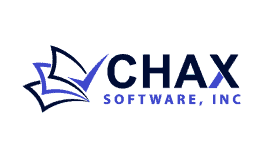Method of Bank Selection
The current version of MultiCHAX® offers three different methods of Bank Account selection:
- Manual
- Semi-Auto
- Automatic.
These methods determine how MultiChax chooses the corresponding bank account to print from. The Ultimate Edition gives you the option of all three different methods (you only need to choose one method). The QuickBooks Starter, Premium, and Professional Editions offer the manual and semi-auto methods as choices.
The three different methods of selection are explained below, including the steps to follow in your accounting software necessary to have MultiCHAX® automatically pull up your account information while printing (only if you do not select the Manual method, additional steps may be necessary):
Manual – This feature is used by those that would rather manually indicate which bank is used each time that a check run is started and does not require any adjustments to your Quickbooks bank information.; Not only will you be asked to select a bank at the start of each check run, but you will also be asked to confirm or change the starting check number.; If you select this option the “Number of Significant Digits” and the “Check Number” coordinate entries in MCSetup will be grayed out.
This method of selection requires no additional setup steps, other than entering the standard grid information for your accounting software into the MCSetup.exe file (a detailed description of the process that is involved in printing then plotting the grid can be found here).

Semi-Auto – Use this method if you are using QuickBooks or Quicken. Instead of obtaining the bank account from the check number (which is unavailable for QuickBooks or Quicken), you can place a bank number in the checking account description (which Quicken/QuickBooks does print on the face of the check).
Steps to follow for setup:
1)Log into Quickbooks
2)Navigate your way to the Chart of Accounts, and edit the bank information for your current bank, by adding leading characters in the range of 001-999.
3)The lead character numbers should represent the numbers of banks you may have. For instance, if you have three banks the first bank should start with the lead characters of 001, then the next bank should be 002. These leading characters are used to provide the software with a unique number that it uses to recognize each separate bank account. An example of this is shown below:

NOTE: The lead characters here must coincide with the lead numbers entered into the MCSetup.exe program for your bank code as shown below:

4)Open the Multichx.exe program.
5)Select your control, then click on Test in the toolbar. Then, select the Grid Toggle (On) option as depicted in the picture below:

6)Then print a check through Quickbooks (make sure to leave the MultiCHAX® program open), and make sure to point to the MultiCHAX® Virtual Printer Driver.
7)Your grid should look like the following image. This will enable you to determine the row and column that QuickBooks/Quicken is printing this code number:

8)You must use the MCSetup program to enter the correct row and column number to point to this bank code number (the default grid points are 2002 for the row and 6 for the column, however, if you have adjusted your template, the numbers may be different).
9)Note when you Select Semi-Auto the “No. of Significant Digits is set to 3. You must use a three-digit bank code, but you can use leading zeros.
NOTE: Also, in this mode, MultiCHAX® does not “know” the check number. It stores the last number used for this bank account, but it will prompt the user to confirm or change the starting number for each check run.
Automatic – For users that are using software packages that print a check number on the face of the check or the check stub as the check is being printed by the accounting program. Most accounting packages except QuickBooks and Quicken provide this functionality. The presence of this number lets MultiCHAX® automatically determine the correct bank account (as explained above) and print the correct check number in the MICR codes and on the face of the check.

